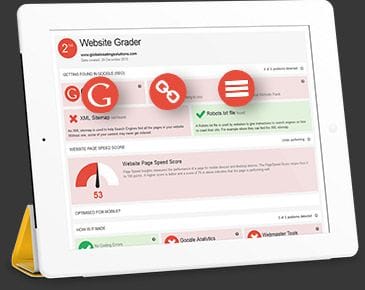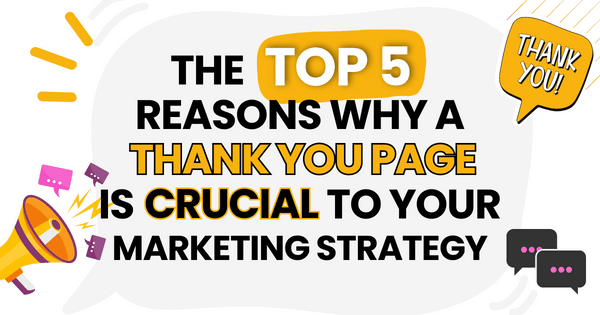Four Easy-To-Spot Signs of Bad Web Design
)
If you’ve designed and built your site yourself (congrats!), it’s been a long process. Chances are your eyes and brain are tired of looking at the same few screens over and over again.
However, don’t let hallmarks of bad web design slip through the cracks because of fatigue or boredom! The QA (Quality Assurance) stage of website testing is one of the most important in the whole lifecycle of a website, as it’s the final chance to comb out errors before the big launch. Generally, if wireframing and design have been well thought-out, the issues revealed by the QA stage will be limited to colour, font and image inaccuracies, and possibly the odd glitch or two.
However, if the discovery stages were skipped, rushed or just hampered by a lack of experience, seeing a website built out for the first time can reveal some dismaying web design mistakes. Here are four important signs of bad web design to remember both during development and when your website is live.
Web Design Mistake #1: Busy (or Flashy) Webpages
Of all the items on this list, this is probably the easiest to spot. If a busy design escapes notice in the design phase, it’s likely going to pop up once the website is on your screen, either because you’re seeing it with fresh eyes, or just because--argh!--there’s way too much going on.
While good web design doesn’t necessarily mean a site looking totally minimalist, it does mean it being easy to navigate, easy to take in, and professional. Is the landing page overwhelming? Look closely; it may be something as simple as having too many images, too many contrasting or garish colours, or too much text all at once. Look a bit closer: do you have images overlaid with text, buttons on busy backgrounds, or relics of the early Internet such as animations, flashy text changing colours, or too many GIFs?
If it’s none of those things, the layout or navigation itself might be the issue. Even the cleanest images and simplest font can become design nightmares if their layout is difficult to use. If you can’t figure out where to click within the first few seconds of landing on a website, chances are it will be a frustrating experience for a user, which could result in an increased bounce rate.
If you want to explore good web design and learn what makes a design truly easy to use, a great place to start is this deep dive into intuitive design.
Web Design Mistake #2: Poor Content Chunking
You have great ideas. That’s a fact. You’ve got something great to share with the world and your website is one of your main vehicles for doing that. Unfortunately, even good web design can be ruined by poor content chunking. That doesn’t mean that you shouldn’t share, or even that you need to limit your sharing. However, it’s important to plan out how you share.
Content chunking is essential to communicating effectively with your user. You can write the most compelling content in the world, but if it’s poorly laid out, only a handful of people will stick with it to the end. At its most basic, content chunking means breaking your content down into paragraphs, which is essential both to communicate your ideas and to keep your reader reading. Poorly chunked content is harder to read and harder to remember.
Don’t be afraid to take up room. Lay out your content in paragraphs with plenty of white space. Consider using images to break it up, and don’t be afraid to spread content across different pages. Use headings to delineate the topic of different paragraphs and sections, and be sure to organize your content by topic and break it up where appropriate.
You can also consider hiding some content with click-and-reveal popups or links to separate pages. Not all content will be relevant to all people all the time, so only present what all users need right up front; good web design will make it easy for them to find the rest!
Web Design Mistake #3: Not Mobile-Friendly
Mobile has surpassed desktop as a means for people to access the Internet. This means that if your website is not responsive, you’ll be missing out on an enormous amount of web traffic. The good news is that with careful design and consideration, it’s easy to make an excellent website that works as well on a phone or tablet as it does on a desktop. The bad news is this should be considered early on in the process of building a website.
Responsive design has ramifications more important than just being able to scroll through your website on a phone. Google ranks websites based on mobile performance, not desktop, so an unresponsive site could affect your Google ranking and your mobility on the web. All the SEO in the world won’t save a website with a fundamental flaw in its design.
Make sure that your font is legible on mobile phones without zooming in, that unnecessary elements in the design or in the code are removed and/or adjusted, and that keywords or essential content are not communicated through images.
When it comes to website testing and responsive design, remember to not just take a quick glance at the website on your phone screen. Try a variety of devices if possible, varying between phone types and manufacturers, and test on different screen sizes. In short, responsive design matters, and it needs to be baked into your web design.
Web Design Mistake #4: Inaccessible Design
Similarly, accessibility should be baked into your website from the beginning, as it’s a painstaking element to add after the fact. Accessibility requirements will vary widely depending on the legislation in your province, the organization or institution for whom you’re building the website, and the audience you’re seeking to reach. Not all accessibility requirements will apply to all websites; however, it’s an essential consideration for all web designers.
At its most basic, accessibility means that the colours on your website contrast enough to be visible (pro-tip: no pale blue on white), and that the font is large enough to be read. Requirements vary in complexity from thereon in. They can be as relatively simple as ensuring that the Tab button can be used to navigate through the clickable elements of your website, or as relatively complicated as ensuring that a screen reading software can replicate the website experience for a non-sighted user. You can learn more about applying accessibility guidelines and requirements here.
Building a website from scratch can feel like wrangling a million moving pieces at the same time, and QA can evoke a peeking-through-the-fingers suspense. You can eliminate that suspense and navigate with confidence with Bloomtools; Bloomtools Websites are designed with strict standards incorporated into our platform and every website we build.
Our team builds fast-loading, optimized websites that are compatible with a variety of different standards and best practices. Get in touch with one of our Bloomtools representatives today to find out how a responsive, expertly designed website can help your business reach its full potential.
| Tags:NewsBusiness DevelopmentBranding |




)
)
)
